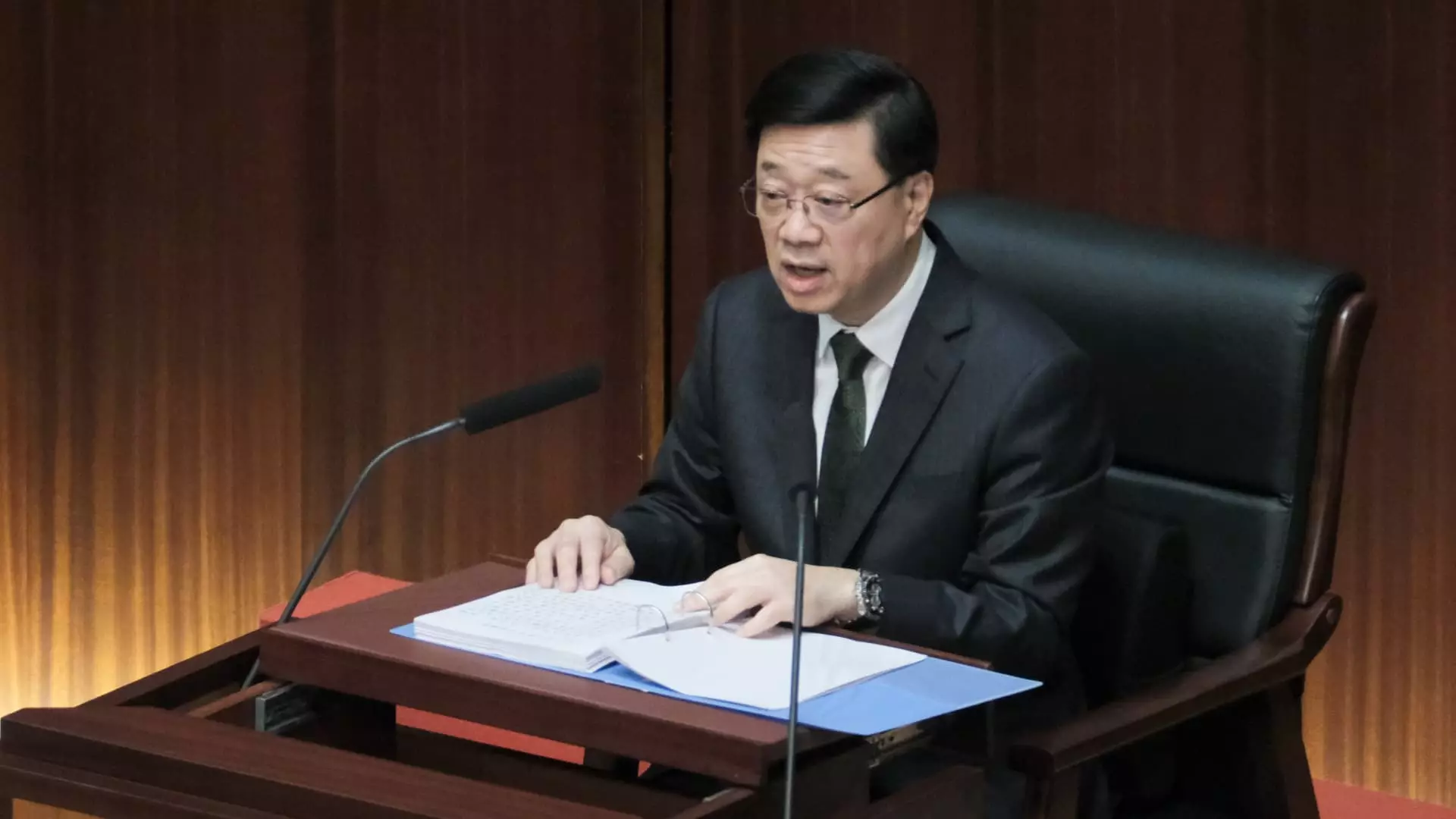In recent times, Hong Kong has gained notoriety for its intense housing crisis, positioning itself as one of the most unaffordable cities globally. The ongoing struggle for residents to secure a stable and affordable living environment has stirred significant public discourse. During his recent policy address, Chief Executive John Lee shed light on various strategies aimed at alleviating the distressing housing affordability crisis. The situation has become an alarming concern, particularly for the younger generation facing daunting barriers to homeownership in a densely populated city.
Lee’s announcements were not merely superficial tweaks; they illustrated a deeper understanding of the socio-economic dynamics that have pushed housing affordability to the forefront of public concern. Recognizing that the issues predominantly affect those under 40, Lee has laid out specific measures to create more accessible options within the housing landscape and improve the living conditions of those grappling with substandard accommodations.
A Focus on Youth Housing Initiatives
One of the cornerstone strategies presented by John Lee is aimed directly at aiding younger citizens in navigating the formidable housing market. Under the proposed framework, individuals under 40 will receive preferential treatment in the subsidized Home Ownership Scheme. By providing an additional ballot number to this demographic, the government aims to enhance their likelihood of securing affordable housing options.
Furthermore, the expansion of the “White Form Secondary Market Scheme” quota—set to increase by 1,500 units—for applicants in this age group is indicative of a tailored approach. Such measures may help address the harrowing trend of young adults often declining promotions or salary increases simply to maintain eligibility for public housing, choosing stability over potential career growth. This unsettling phenomenon underscores the dire state of housing affordability in the city.
In addition to enhancing access to subsidized flats, the continuation of the Youth Hostel Scheme is another forward-thinking initiative highlighted by Lee. This scheme supports non-governmental organizations in renting facilities for youth hostels, allowing lower-income individuals an opportunity to find semi-permanent housing while remaining financially nimble.
Structural Changes to Improve Living Conditions
While access to affordable housing is vital, Lee also underscored the necessity of improving the quality of existing housing. The launch of a new system for subdivided flats—often termed “shoe-box sized” living spaces—aims to upgrade and regulate these substandard units. The proposal to convert such spaces into “Basic Housing Units” introduces much-needed safety and livability standards. The criteria such as proper windows, toilets, and comparable unit sizes signify a solid move towards ensuring healthier living conditions for residents.
Moreover, the commitment to constructing approximately 30,000 new public housing units by 2027-2028 signals a dedication to long-term solutions. Richard Lee’s forecast to decrease the current public housing wait time from 5.5 years to 4.5 years by 2026-2027 would certainly alleviate some of the pressure on families actively seeking stable housing. However, whether these ambitious goals can be realized remains an open question; the implementation of such plans often faces bureaucratic and logistical hurdles.
John Lee’s recent policy address reflects a conscious shift in priorities. In contrast to previous speeches focusing on national security and pandemic recovery, this address centered notably on improving the lives of ordinary residents and fostering economic stability. By articulating a cohesive set of policies focused on housing, Lee is keenly aware that the plight of the citizens does not merely hinge on macroeconomic factors but is intricately tied to their day-to-day existence.
In essence, while the policies introduced are crucial steps toward ameliorating the housing crisis, success will lie in the diligent execution of these initiatives. It is a collective hope that, with sustained effort and attention, Hong Kong may one day provide a feasible and secure housing landscape for future generations, alleviating the burdens that have long plagued its residents.

Leave a Reply